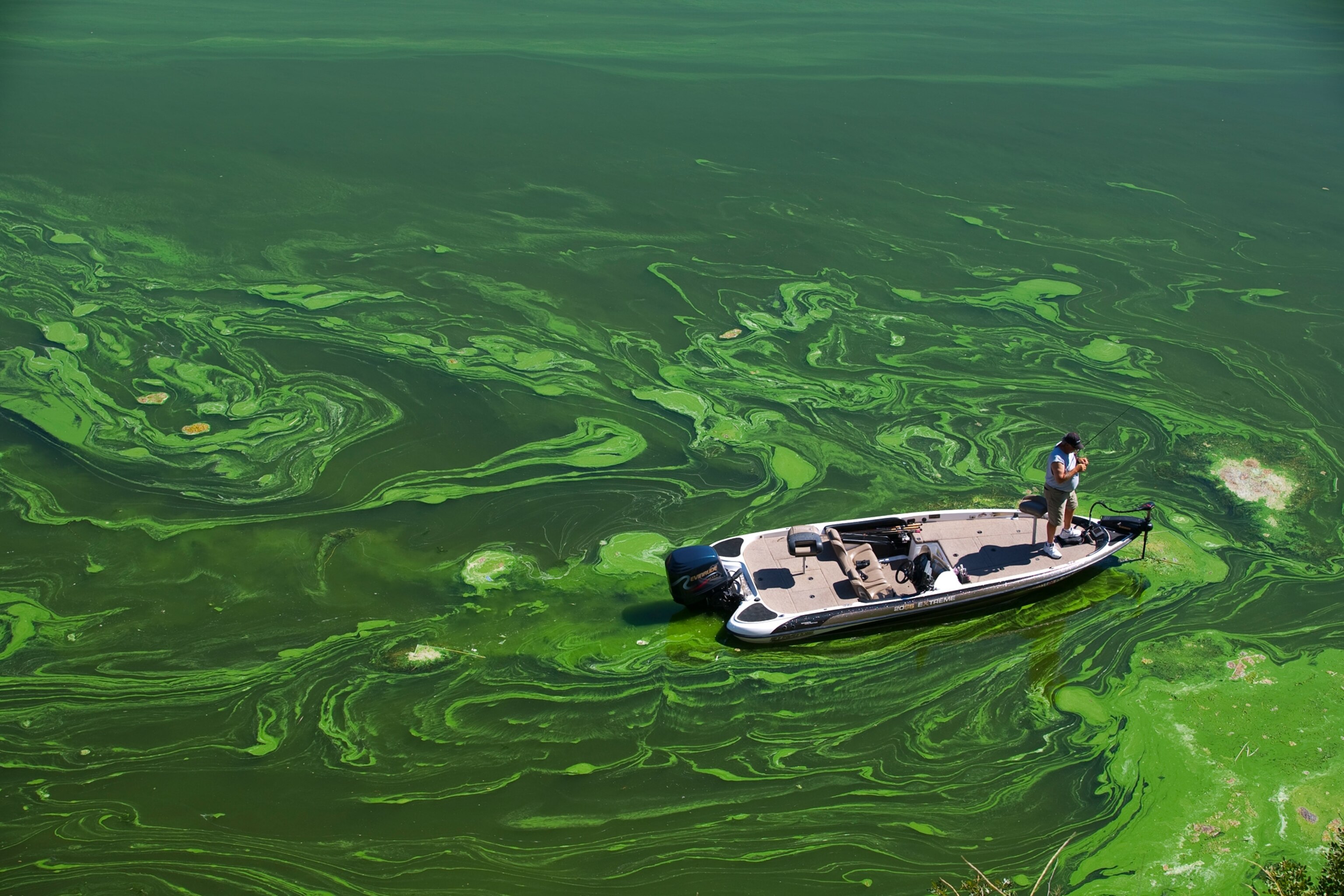







Pictures: Extreme algae blooms expanding worldwide
Too much of a good thing? Excess nutrients, warmer temperatures, and an increasing population are causing explosions of algae worldwide.
With an estimated seven billion people and counting, the world's population will only get hungrier. The advent of fertilizers and high-yield crops have helped growers keep pace with the demand for food.
But there's an unintended crop flourishing around the world that is not always so beneficial. Microscopic, plantlike organisms called algae thrive on the excess nutrients—like nitrogen and phosphorus—found in fertilizers that make their way from backyards and fields, producing blooms that can sometimes be seen from space.
Combined with warming temperatures and water circulation patterns, coastal areas such as Qingdao, the Gulf of Mexico, and the U.S. West Coast—as well as freshwater systems like the Great Lakes—are no strangers to enormous algae blooms that can turn the water green or red.
Some of these blooms can create dead zones, or areas that are deprived of oxygen, in the water. And some algal species can also produce toxins that wreak havoc on human livers and neurological functions and cause seizures in marine mammals. (Read more: Toxic algae causing brain damage, memory loss in sea lions.)
"There's no question in my mind that we are seeing a global increase in the frequency and severity of these [blooms]," said David Caron, a researcher at the University of Southern California (USC) in Los Angeles who studies harmful algal blooms.
Related Topics
You May Also Like
Go Further
Animals
- How can we protect grizzlies from their biggest threat—trains?How can we protect grizzlies from their biggest threat—trains?
- This ‘saber-toothed’ salmon wasn’t quite what we thoughtThis ‘saber-toothed’ salmon wasn’t quite what we thought
- Why this rhino-zebra friendship makes perfect senseWhy this rhino-zebra friendship makes perfect sense
- When did bioluminescence evolve? It’s older than we thought.When did bioluminescence evolve? It’s older than we thought.
- Soy, skim … spider. Are any of these technically milk?Soy, skim … spider. Are any of these technically milk?
Environment
- Are the Great Lakes the key to solving America’s emissions conundrum?Are the Great Lakes the key to solving America’s emissions conundrum?
- The world’s historic sites face climate change. Can Petra lead the way?The world’s historic sites face climate change. Can Petra lead the way?
- This pristine piece of the Amazon shows nature’s resilienceThis pristine piece of the Amazon shows nature’s resilience
- Listen to 30 years of climate change transformed into haunting musicListen to 30 years of climate change transformed into haunting music
History & Culture
- Meet the original members of the tortured poets departmentMeet the original members of the tortured poets department
- Séances at the White House? Why these first ladies turned to the occultSéances at the White House? Why these first ladies turned to the occult
- Gambling is everywhere now. When is that a problem?Gambling is everywhere now. When is that a problem?
- Beauty is pain—at least it was in 17th-century SpainBeauty is pain—at least it was in 17th-century Spain
Science
- Here's how astronomers found one of the rarest phenomenons in spaceHere's how astronomers found one of the rarest phenomenons in space
- Not an extrovert or introvert? There’s a word for that.Not an extrovert or introvert? There’s a word for that.
- NASA has a plan to clean up space junk—but is going green enough?NASA has a plan to clean up space junk—but is going green enough?
- Soy, skim … spider. Are any of these technically milk?Soy, skim … spider. Are any of these technically milk?
Travel
- Dina Macki on Omani cuisine and Zanzibari flavoursDina Macki on Omani cuisine and Zanzibari flavours
- How to see Mexico's Baja California beyond the beachesHow to see Mexico's Baja California beyond the beaches
- Could Mexico's Chepe Express be the ultimate slow rail adventure?Could Mexico's Chepe Express be the ultimate slow rail adventure?




